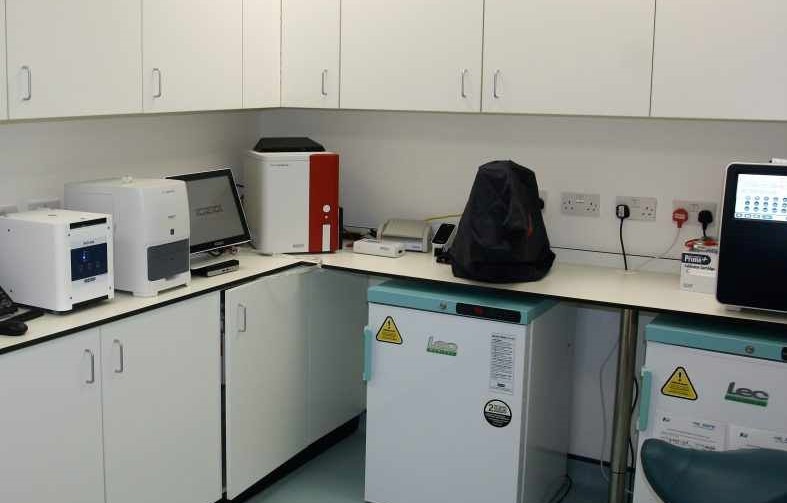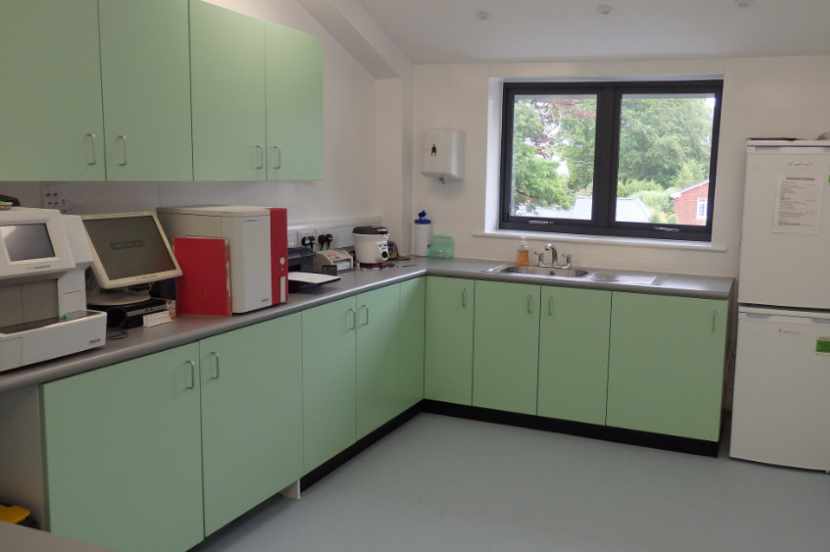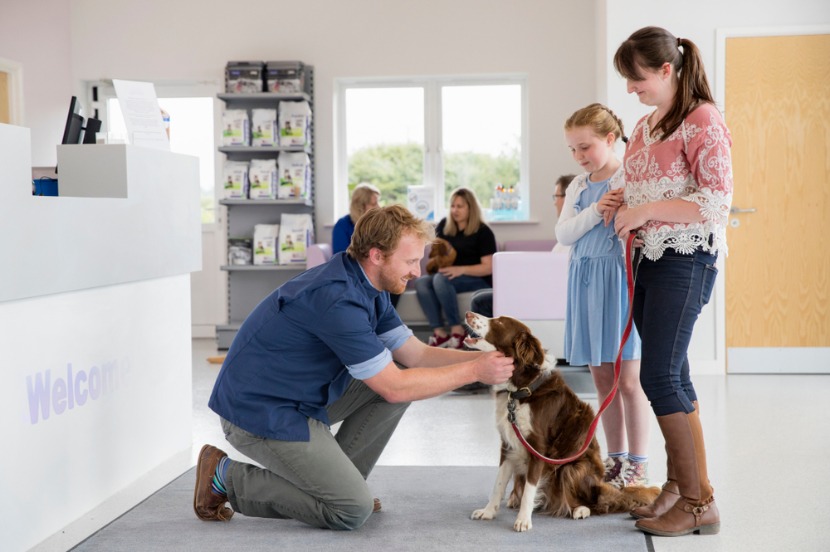Setting up a veterinary clinic is an exciting process. There's a lot to manage, but…

Think again about the power of fitted furniture in a vet’s practice
If you are one of the country’s 24,000 vets and you are reading this blog, then you are probably not too concerned about the attractions of modern fitted furniture and storage units. Such units are part of the infrastructure of a modern surgery and at first glance you would be forgiven for thinking that they contribute little, but there is plenty of evidence to suggest otherwise – so maybe it is time to think again about those ‘cupboards’ and what they really say about your practice.
Fitted furniture is an essential component of any veterinary practice. It not only provides a functional workspace for veterinarians, but also ensures that the space is organised, efficient, and visually appealing.
It can also be shown that good fitted furniture in a veterinary practice can improve overall workflow and productivity. According to a study conducted by the American Animal Hospital Association (AAHA), a well-designed veterinary practice can result in a 30% increase in productivity.
This increase is due to the optimised use of space, the reduction of unnecessary movements, and the efficient arrangement of equipment and supplies. Fitted furniture such as custom-made cabinets, countertops, and shelving can be designed to fit the specific needs of the practice, providing easy access to all necessary items and minimising the time spent searching for tools or equipment.
This is confirmed by a second survey conducted by veterinary management software company, Vetter Software, who found that 62% of veterinary practices stated that they are not organised enough, leading to difficulties in managing appointments and workflow.
There is also evidence that good fitted furniture can improve the aesthetics of a practice. A study conducted by the British Veterinary Association (BVA) found that 70% of pet owners make decisions on where to take their pet based on the appearance of the veterinary practice.
By installing well-designed and stylish fitted furniture, the practice can create a welcoming and calming atmosphere that can attract more pet owners. The BVA study also found that 92% of pet owners would be more likely to recommend a veterinary practice to others if it had a good appearance.
Good fitted furniture and storage units are also important for other reasons. Most especially they help to create a clean and organised environment, which is essential for maintaining high standards of hygiene and preventing the spread of disease. When clients see that a veterinary practice is clean and well-maintained, it can help to build their confidence in that practice’s ability to provide safe and effective care for their pets.
Another major benefit of good fitted furniture in a vet’s practice is the reduction in the risk of accidents and injuries. According to the Occupational Safety and Health Administration (OSHA), over exertion and falls are two of the most common causes of injuries in the workplace. In a veterinary practice, it has been suggested, that the risk of these types of injuries can be reduced by installing ergonomic workstations and storage systems that are designed to fit the needs of workers.
In addition to reducing the risk of accidents and increasing productivity, good fitted furniture can also help to create a positive work environment. A study conducted by the American Psychological Association found that employees who work in an environment that is designed to promote their well-being are more likely to be happy and satisfied with their jobs. This can lead to increased job satisfaction and lower staff turnover rates.
So maybe it’s really time to think again about good fitted furniture and the benefits it can bring to your practice. By investing in high-quality fitted furniture, from suppliers such as David Bailey Furniture, veterinary practices can help to build a positive reputation and attract loyal clients who trust them with the care of their furry family members – and that is what the evidence says.







